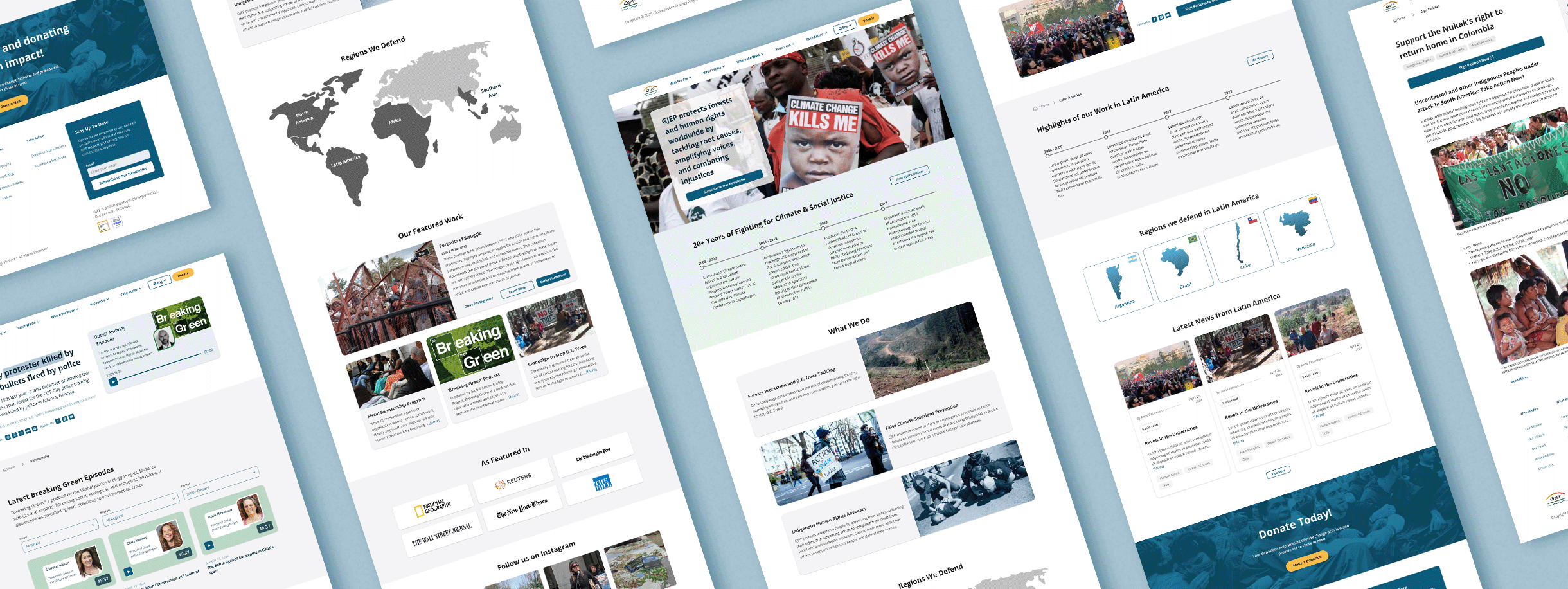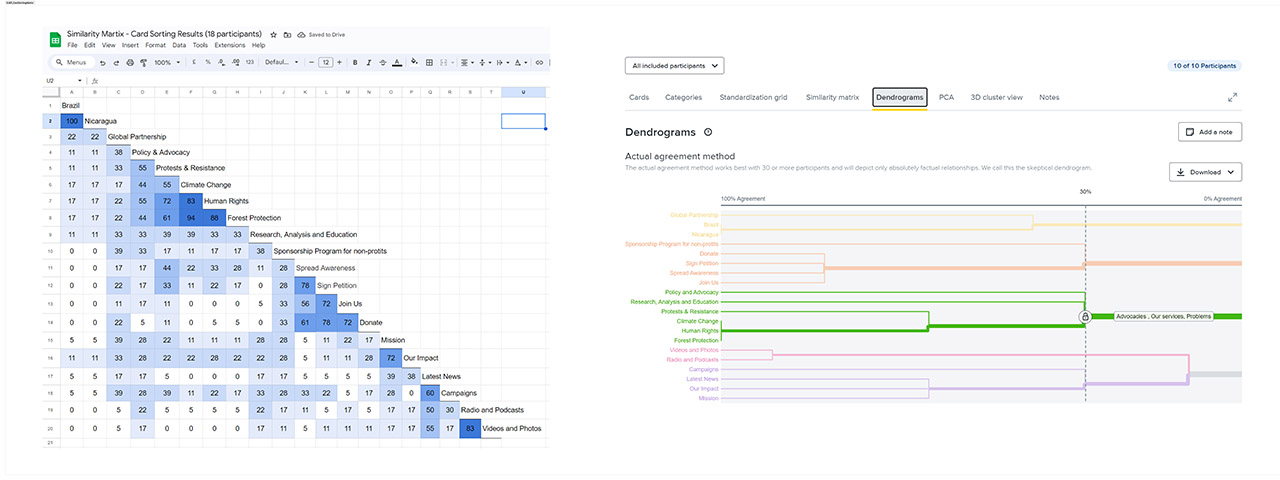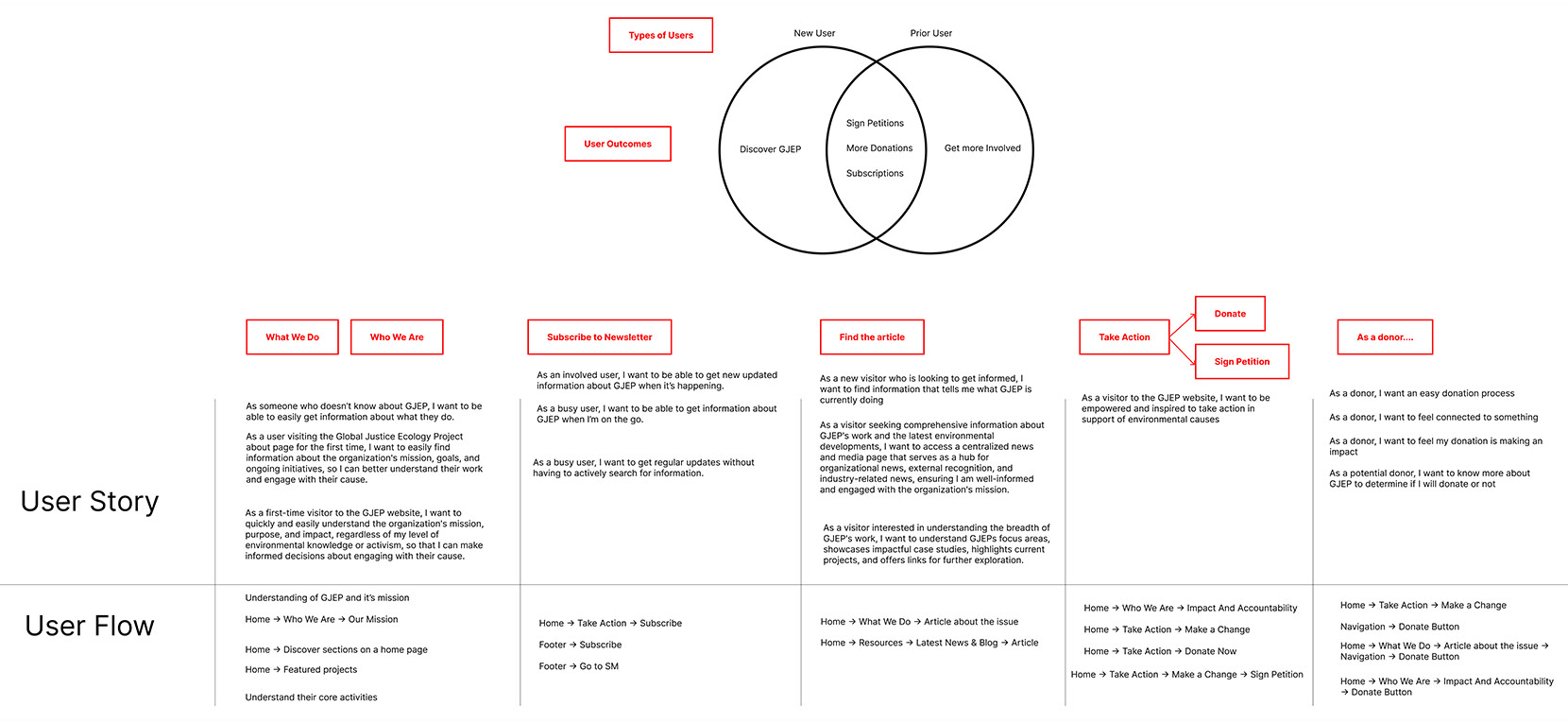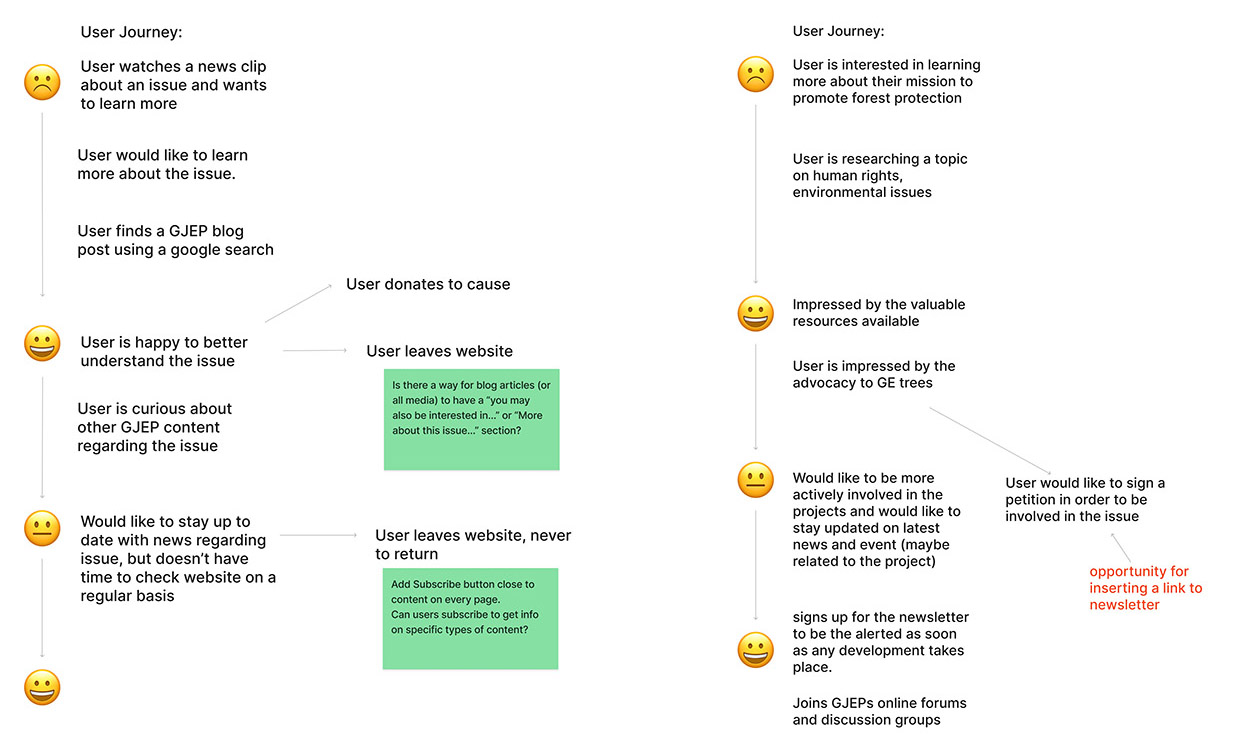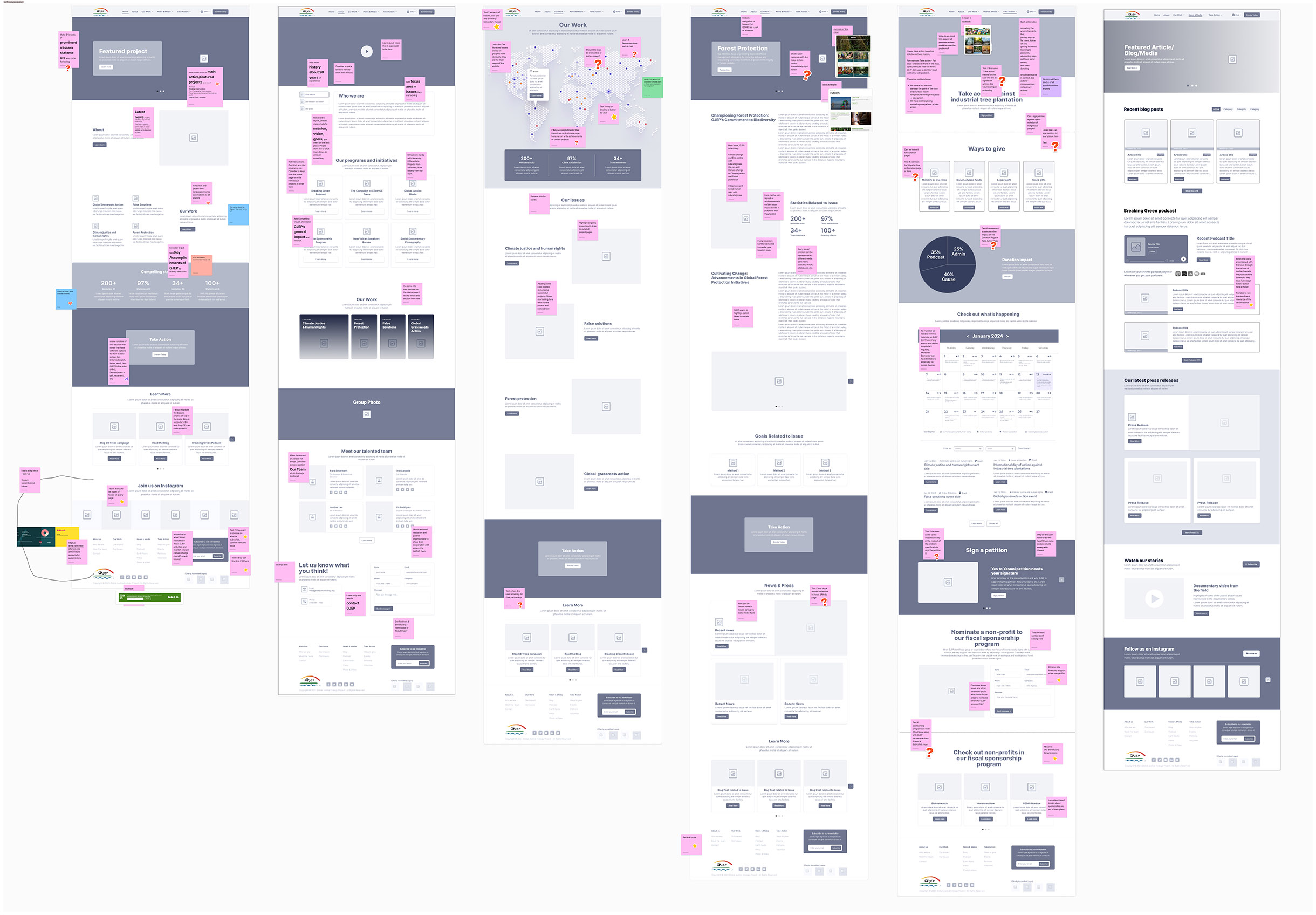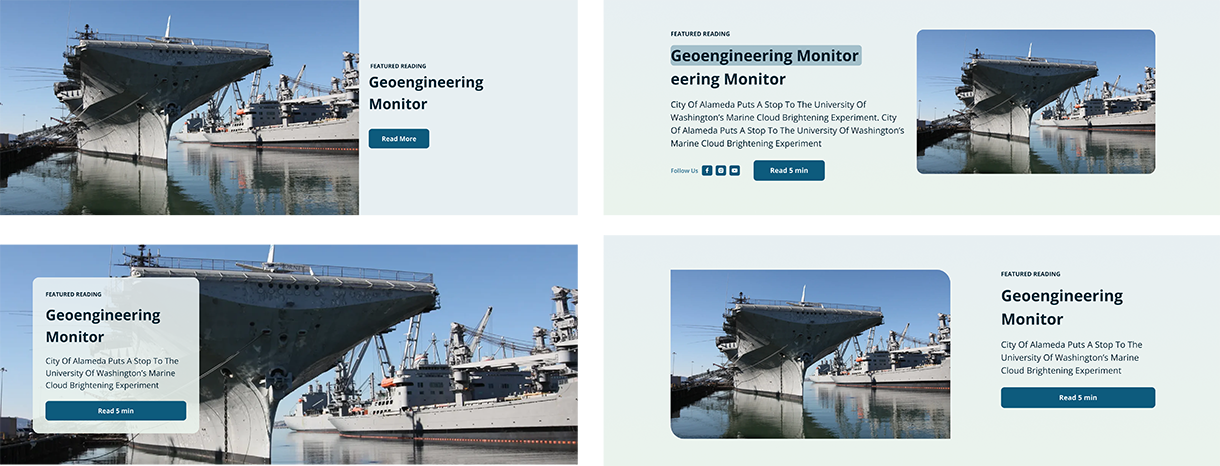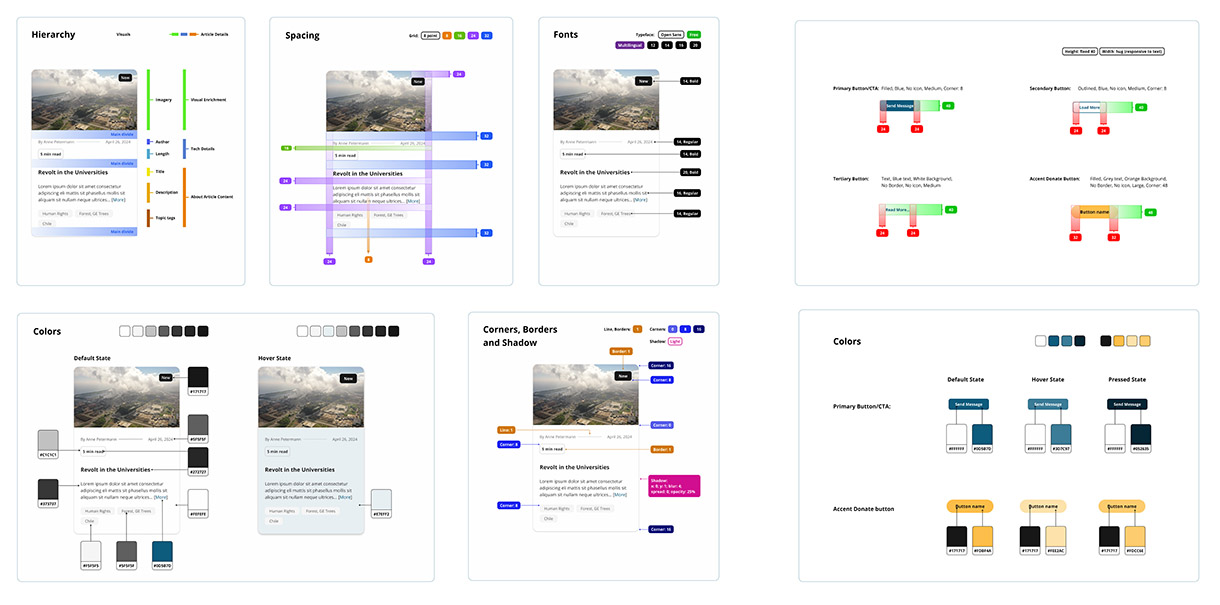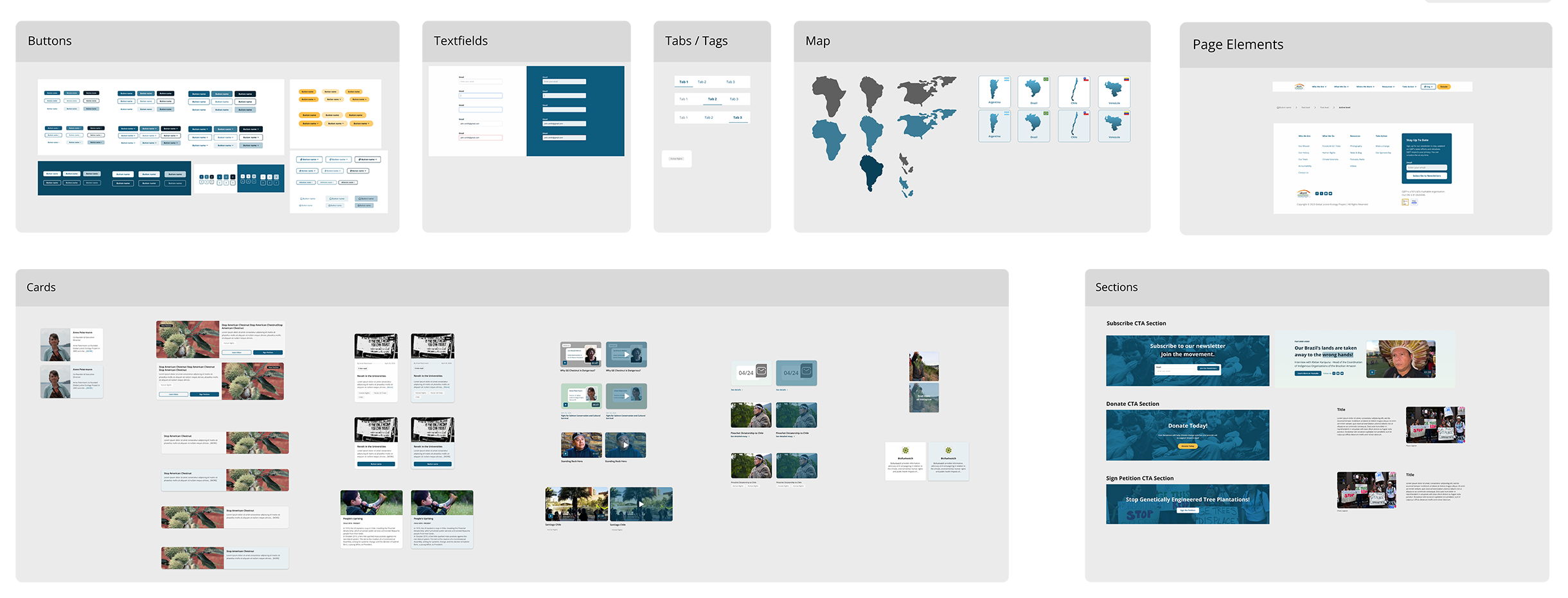Our team aligned around a shared goal: to make GJEP’s impact visible, tangible, and easy to engage with.
We envisioned a single, unified platform that communicates the organization’s mission through clear storytelling, transparent impact data, and seamless interaction.
Research emphasized the importance of refining language, tone, and navigation so that:
a) GJEP’s long-standing advocacy work is clearly understood, and
b) visitors can easily see how their support contributes to meaningful outcomes.

